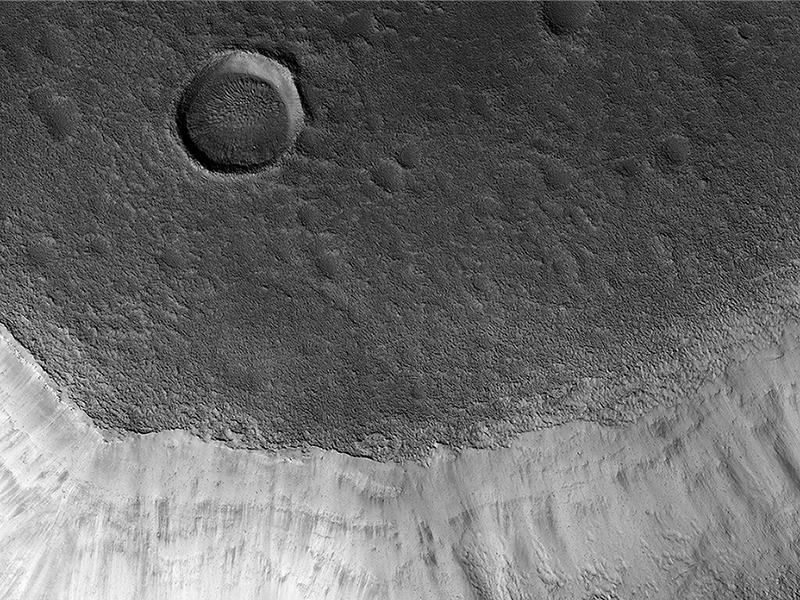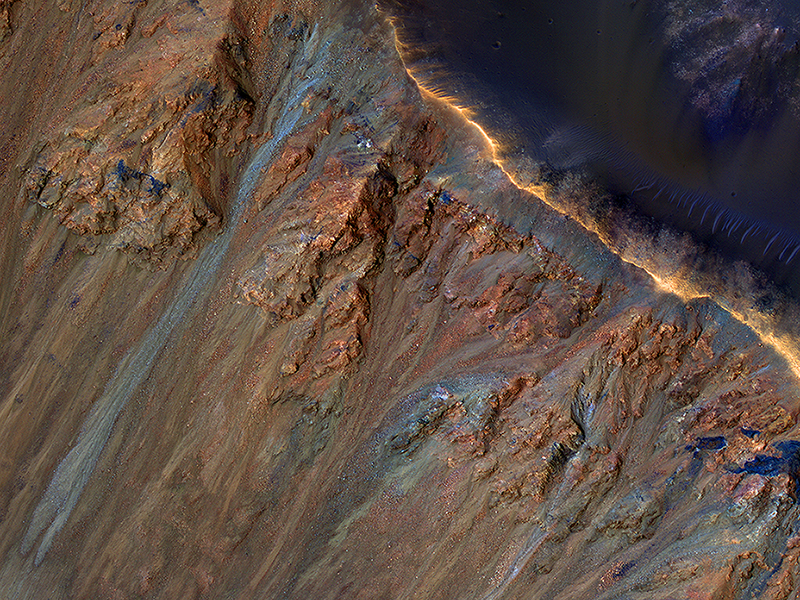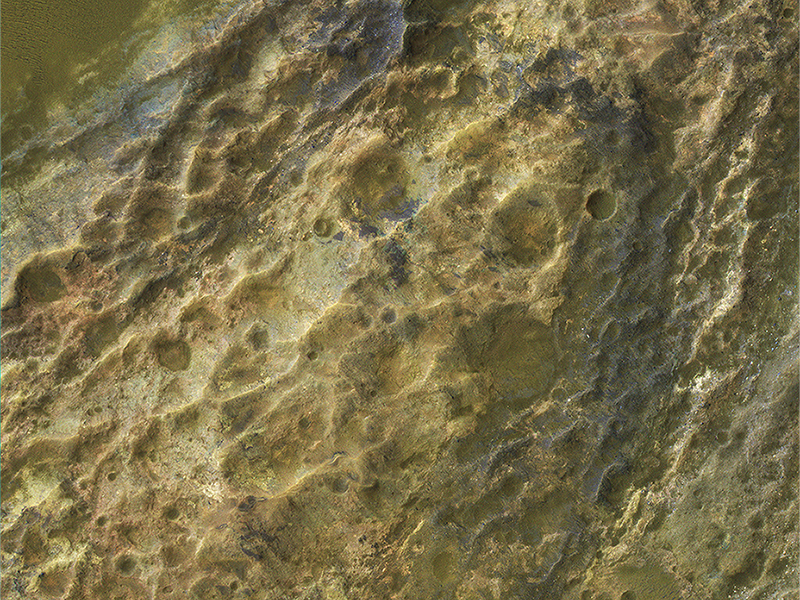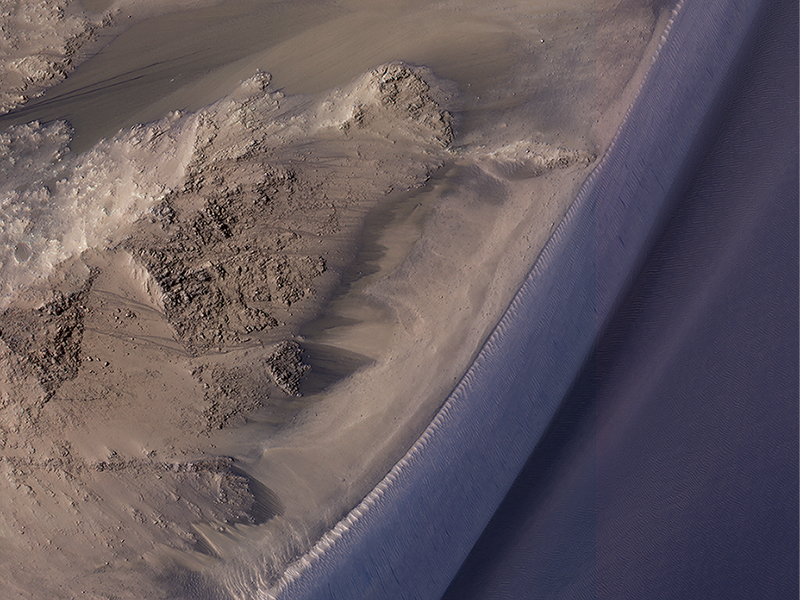Singleton Thibodeaux-Yost wrote:Aging with Impacts (ESP_049398_2180) (HiClip)
Mamers Valles is a long (approximately 1000 kilometers) sinuous canyon beginning in Arabia Terra and ending in the Northern lowlands of Deuteronilus Mensae. This image features the southern facing slope of the canyon wall.
The northern half (top) has a rough, pitted texture with numerous impact craters, while the middle section shows the steep canyon wall. Streaks of slightly different colors show slope material eroding onto the canyon floor. Though the canyon itself was formed long ago, the material deposited on the canyon floor has been laid down over time, creating a much younger surface.
The difference in age of the surfaces can also be indicated by the presence or absence of impact craters. The longer a surface has been exposed, the more impact craters it will accumulate. Counting craters to determine age estimates of planetary surfaces has been used throughout the solar system. This method is based on the assumption that the youngest, freshly formed surfaces will have no impact craters, and as time progresses crater impacts will accumulate at a predictable rate. This concept has been calibrated using crater counts on the Moon and the measured age of the rocks brought back by the Apollo missions.
Alfred McEwen wrote:Colorful Equatorial Gullies in Krupac Crater (ESP_049488_1720) (HiClip)
Although large gullies (ravines) are concentrated at higher latitudes, there are gullies on steep slopes in equatorial regions. An enhanced-color closeup shows part of the rim and inner slope of Krupac Crater located just 7.8 degrees south of the equator.
The colors of the gully deposits match the colors of the eroded source materials. Krupac is a relatively young impact crater, but exposes ancient bedrock. Krupac Crater also hosts some of the most impressive recurring slope lineae (RSL) on equatorial Mars outside of Valles Marineris.
Another close look shows some of RSL, flowing downhill (to the left). The RSL leave bright deposits when inactive from previous years; this year’s active RSL are the thin dark lines.
Alfred McEwen wrote:Colorful Bedrock (ESP_049968_1655) (HiClip)
This image covers diverse surface units on the floor of eastern Coprates Chasma in eastern Valles Marineris.
The bedrock has diverse minerals producing wonderful color contrasts. In over 10 years of orbiting Mars, HiRISE has acquired nearly 50,000 large images, but they cover less than 3 percent of the Martian surface.
Alfred McEwen wrote:Seasonal Flows in Valles Marineris (ESP_049955_1665) (HiClip)
Recurring slope lineae (RSL) are seasonal flows on warm slopes, and are especially common in central and eastern Valles Marineris. This image covers a large area full of interesting features, but the enhanced color closeup highlights some of the RSL.
Here, the RSL are active on east-facing slopes, extending from bouldery terrain and terminating on fans. Perhaps the fans themselves built up over time from the seasonal flows. Part of the fans with abundant RSL are dark, while the downhill portion of the fans are bright. The role of water in RSL activity is a matter of active debate.
Credit: NASA/JPL-Caltech/University of Arizona
<< Previous HiRISE Update



